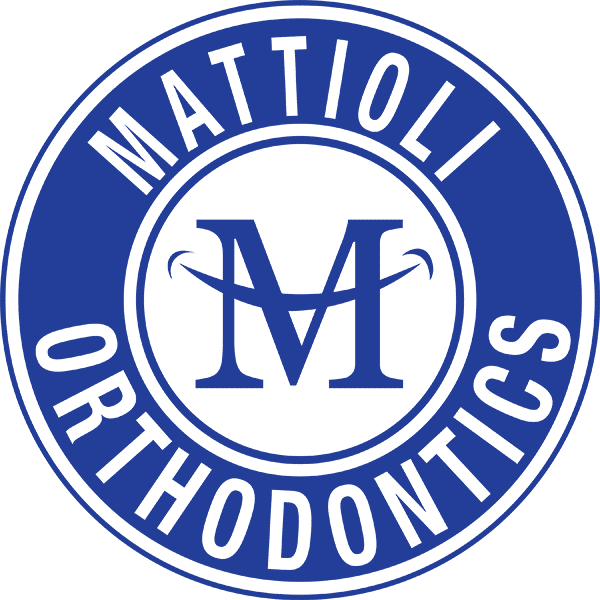Frequently Asked Questions About Orthodontics
Initial Visit
Do you charge for an initial visit?
Your first visit with us is completely complimentary. As a courtesy to both you and your general dentist, we provide a free orthodontic evaluation. Please note that if X-rays or other diagnostic services are required, this will be submitted to your insurance for payment.
Why do you evaluate patients so young during an early braces for kids visit?
These early orthodontic checkups are typically focused on observation and education rather than immediate treatment. We look at growth patterns and identify potential problems early, often simply monitoring development until the right time for treatment.
How long will the first visit take, and is the orthodontist consultation included?
Plan for your initial appointment to last about 30 to 60 minutes. This may include a basic visual exam and, if needed, taking diagnostic records. You’ll also meet with Dr. Robert Mattioli to review findings and discuss possible next steps.
Do you take patients transferring from out of town?
Yes, we welcome transfer patients. We’ll complete a thorough evaluation and design a personalized treatment plan without requiring a large upfront fee, offering fair monthly payments to make the transition easier.
What is the difference between an orthodontist and a dentist, and who should I see for teeth alignment?
An orthodontist is a dental specialist with two or more years of advanced training in aligning teeth and correcting bite issues. For braces or Invisalign treatment, an orthodontist is the right professional to consult.
Can I make all my appointments in the afternoon after school and late in the day?
We do our best to work within your schedule. While some longer procedures are done during regular daytime hours (9 a.m.–3 p.m.), we reserve early morning and late afternoon slots for quicker visits whenever possible.
Do you see patients for emergencies?
Yes. If you experience an orthodontic emergency, call our office. You can also find emergency instructions and contact details on our website and voicemail.
Types of Orthodontic Treatment
What is Phase 1 Treatment, and how does it help with early pediatric orthodontist needs?
Phase 1 treatment takes place while a child still has both baby and adult teeth. It targets significant early issues, such as crossbites or jaw growth concerns, to help prevent more complicated problems later. It often sets the stage for successful Phase 2 treatment.
What is Phase 2 Treatment, and how does it compare to braces vs Invisalign for teens?
Phase 2 begins after all permanent teeth have come in, typically lasting 18–24 months. This phase focuses on fully aligning the teeth and bite, using either braces or Invisalign for a lasting result.
How do I know two-phase treatment is the right teeth straightening for teenagers?
Every case is unique. Two-phase treatment is recommended only when it provides a clear benefit for your child’s needs. A thorough evaluation and diagnostic records will help determine the best plan.
Moving of Teeth (Mechanics)
I need to be pre-medicated for the dentist. Do I need to take my medicine for the orthodontist?
Possibly. Certain orthodontic procedures may require pre-medication. Check with your physician or Dr. Mattioli before your visit.
How do teeth straightening options actually move your teeth into place?
Braces and aligners work by applying gentle, consistent forces to guide teeth into better alignment. Dr. Mattioli carefully plans each stage for safe, predictable movement.
Do you use recycled braces?
No, we only use brand-new appliances for each patient.
Orthodontic Retainers
Why do teeth get crooked after wearing braces or clear aligners?
Teeth naturally shift over time, but consistent retainer use helps prevent this movement.
How about retainers glued to the backs of teeth?
Bonded retainers placed behind the front teeth can help keep them aligned. They require careful cleaning and regular dental visits to stay in good condition.
Wisdom Teeth (Third Molars)
Do wisdom teeth cause teeth to get crooked?
Current research shows no strong link between wisdom teeth and crowding. Other factors usually play a bigger role in shifting teeth.
Why do wisdom teeth need to be removed before or after jaw alignment treatment?
Impacted wisdom teeth can cause gum issues or infections. Even without causing crowding, they’re often removed as a preventive measure.
When is a good time to have wisdom teeth removed?
Most oral surgeons suggest removal once about two-thirds of the root has formed, usually between ages 16 and 18.
Temporomandibular Disorders (TMJ)
Can braces or orthodontic treatment treat or cause TMJ problems?
There’s no confirmed link between orthodontic treatment and TMJ disorders. These conditions can occur with or without orthodontics.
Health Impact
What are the health benefits of wearing clear braces for adults or teens?
Orthodontic treatment can improve chewing, facial balance, and oral hygiene. Straighter teeth are easier to clean, which supports better overall dental and general health.
How do enlarged adenoids and allergies affect braces?
Chronic mouth breathing from allergies or enlarged adenoids may impact jaw growth, potentially causing crowding or bite issues.
How does a tongue thrust or low tongue posture affect braces?
Poor tongue posture can place pressure on the front teeth, leading to spacing or protrusion. Addressing these habits can improve orthodontic results.
